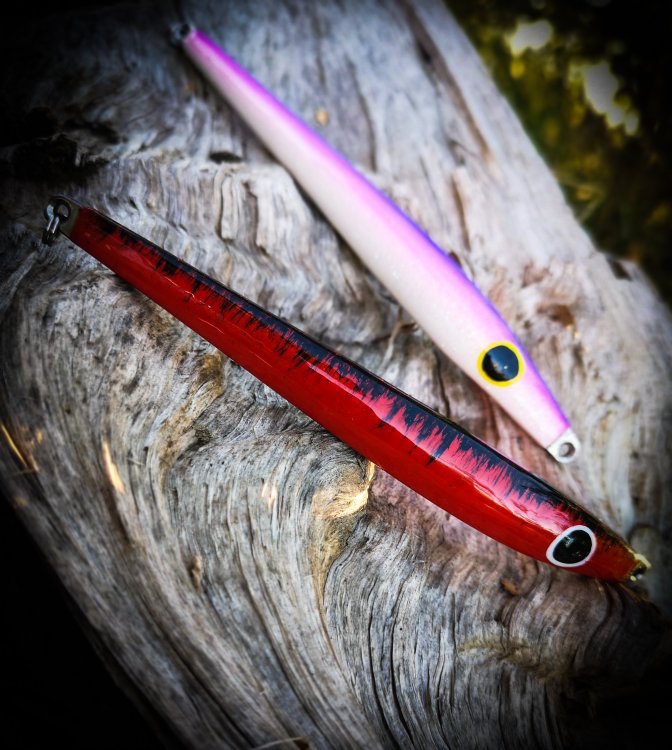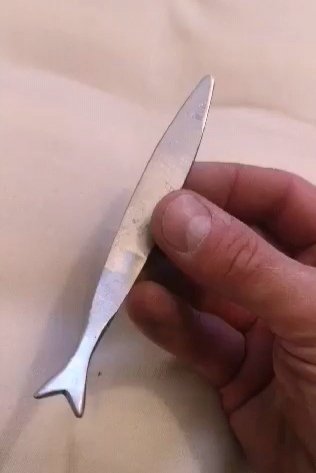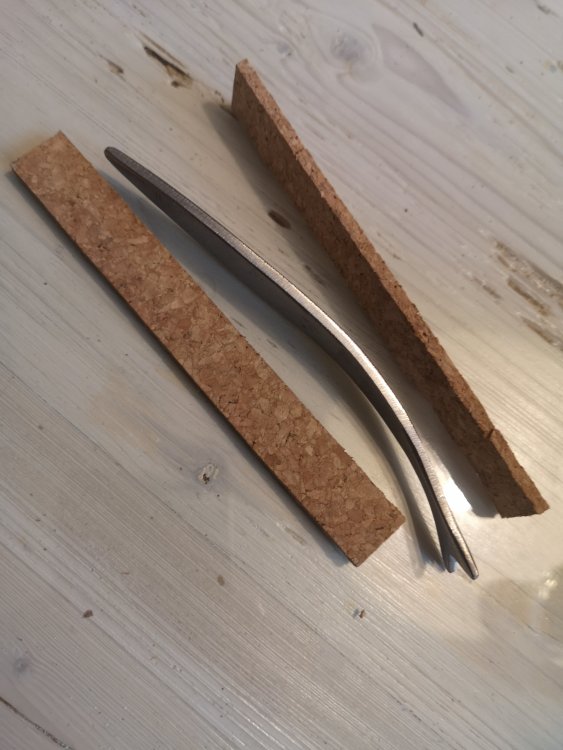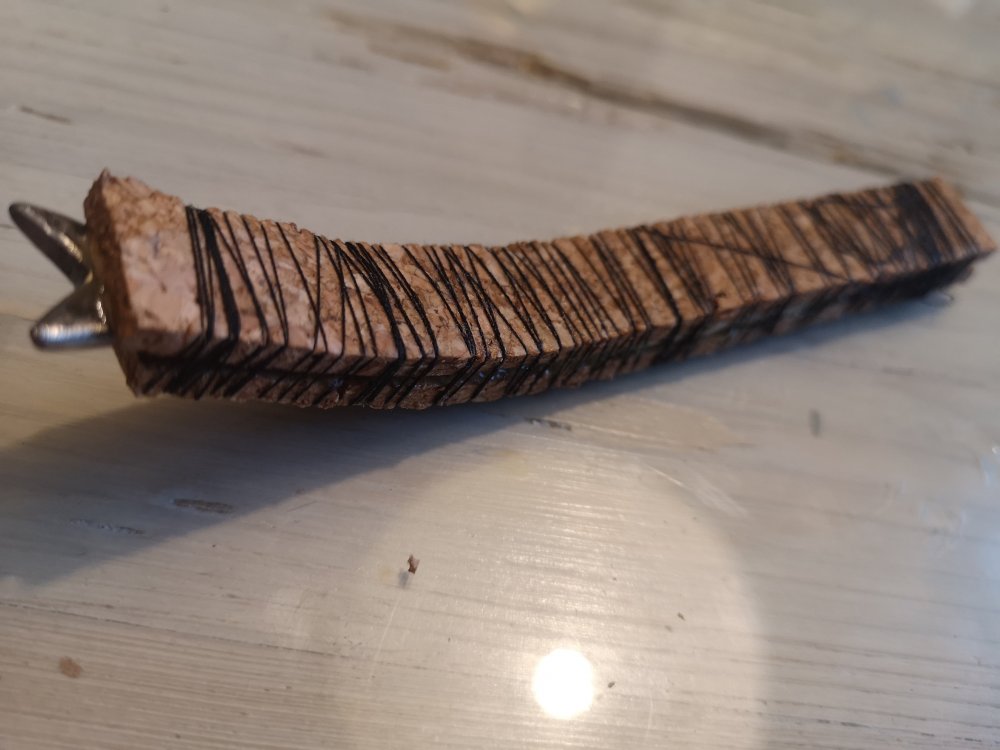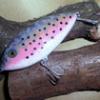Search the Community
Showing results for tags 'trout spoon'.
-
How-To-Make an Lightened spoon for Trout fishing. So this is going to be a guide of how to make and an trial run at the same time for new version of traditional "Lightened" Trout spoon, that we use a lot on Finland for Trout fishing. These spoons mimic a fish called The great sand eel (Hyperoplus lanceolatus). Here you can see the traditional version of the spoons made by me. Originals have a curve on the nose and is connected to line by its tail. Curved nose makes the lure spin like worm kind of fashion. "Lightened" in quotations as it really doesn't get lightened during manufacture, but there is material glued to heavy stainless or acid-proof steel spoon to add buoyancy. This material is usually cork or rigid foam. I use cork sheets. These spoons usually are from 10 to 15 cm of length, which aquals about 4 to 6 inches and weights from 22 to 35 grams (0.7 to 1.2 oz). This is the updated design. There's an added tail that has the curve, so it's connected to the line by its nose. After grinding the steel to its shape, it time to glue the cork in place. I use polyurethane glue for this, but epoxy is a good choise also. When gluing the cork in place, I'll take an old Japanese way of adding the pressure by using thread. Now it's time to wait for the glue to set and I'll continue my work tomorrow. Cheers, Jarmo from O'baits
- 15 replies
-
- spoon
- trout spoon
-
(and 2 more)
Tagged with:
-
Hi there , folks , Some months ago I had put up the following video on YouTube , ....some of you fellas out there might have already seen it : In a recent comment on on this video someone stated that he could not quite figure out about my given building instructions , ....so I've made up my mind to do an instructional video this morning . My apologies for the video not being too clear , I should have used the close-up function of the camera , but I was not sure , whether it would work out , .....surely next time I will ! http://www.youtube.com/watch?v=nn7y1C6y-_4 Greetz , Dieter
- 3 replies
-
- 1
-

-
- trout spoon
- trout
-
(and 1 more)
Tagged with:
-
Hi , people , Shot this little clip this morning at the fishing club's pond , ......thought that I would share this little metal lure in here as well , ........it's just so easy to make , only few metal working skills and gear required . Not sure , whether different species but trout would also frequently take this lure , ......nevertheless I've caught a smallie pike on it last year as well . But in that angling magazine mentioned in the video they wrote , that the original 1940's/50's vintage spoon had a very good reputation back then to reliably catch trout in smaller creeks . For those interested , ......here is the magazine article , in which I came across this lure for the first time : http://www.raubfisch.de/454,765/ Thanks a lot for your interest in my humble lure work , ........cheers , diemai


